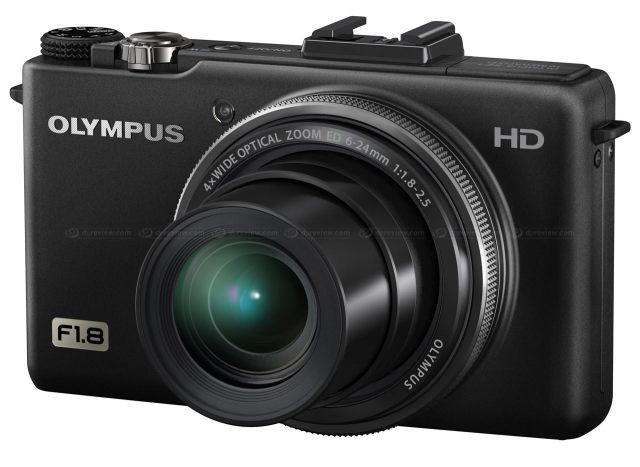CES dismays.
The Las Vegas Consumer Electronics Show extravaganza last week underwhelmed mightily when it came to digital still camera innovation.
Most journalists are naming the new Olympus XZ-1 as the best of show (how many did Olympus have to ‘donate’ to effect this result?) but I really can’t get too excited over yet another point-and-shoot with a microscopic sensor and a crappy LCD screen passing for a viewfinder, even if the maximum aperture never falls below f/2.5. Didn’t Panasonic do this with the LX5 ages ago, with like manual controls? Gee, I just can’t wait to see the image quality at f/2.5.

Yawn. Olympus XZ-1.
Eye One soldiers on with its wifi SDHC cards; having concluded that these are worthless for transmitting decent sized RAW files over the air as they are bog slow, they are now promising you can send your snaps to your iPhone for onwards relay. What? Why not use the iPhone to snap the picture in the first place? A solution looking for a problem.
What is really lacking here is any form of innovative thinking. And no, 3D is not about to happen big time when you have to watch your TV with special glasses. That failed in the US cinemas of the 1950s and will fail in US homes of the 2010s.
Apple is focusing on its iEverything ecosystem and sadly has no time to devote its design genius to making a truly innovative digital Apple camera. Panasonic has totally dropped the ball with the GF2, refusing to integrate a small EVF into a neat body design, in lieu of the faux prism hump on the G2/GH2 designs.
And Fuji, proclaiming itself to be ‘surprised and delighted’ with advance reactions to its FX100 didn’t as much as show a prototype, meaning I won’t be holding my breath over its imminent arrival. Excuse me, but how can reactions be so positive to something which, for all practical purposes, does not exist? Maybe that piece of mine all those years ago on Label drinkers needs to be refreshed? The new version will be titled ‘Spec drinkers’. I’m more excited than most over this large sensor, fixed focal length offering, as street snapping is my thing and the specs seem suited to that genre, but until the camera has actually been subjected to real, un-conflicted field tests (meaning no freebies or advertising $$$) it’s hardly something to be excited about.
There’s still tons of room for innovation in the small camera digital field. Developments such as water lenses in eyeglasses, where the lens’ shape and focal length can be changed manually, are crying out for incorporation in compact camera designs. Only the clunky Leica M9 brings a full frame sensor to a (not so) compact street snapper and that with a dated and inept optical viewfinder and mostly oversized lens options, with everything at silly prices and build quality and robustness more GM than Toyota. Where are the higher definition, lower noise EVFs building on the example set by the Panasonic G1? Where is built in 802.11n or, better, 802.11x, wifi for sending large RAW files to your server of choice with big buffers to negate the drawbacks of slow wifi or 3G? How about automated HDR to overcome the limited dynamic range bugaboo which haunts digital sensors? Pentax had a go at this in its DSLRs but it needs better implementation. Where are the f/1.0 lenses? I would much rather have to tote two small fixed focal length cameras, with say 35mm f/1 and a 90mm f/2 fast lenses, than one with a slow superzoom. Where is the circuitry to impose selective focus through software and processing, as Topaz Labs’ ReMask claims to do (slow, overhyped, overpriced and buggy as with every Topaz product I have tried, by the way)?
Lots of ideas, with little innovation. Digital seems to have hit the wall of a lack of imagination in its designers’ labs.